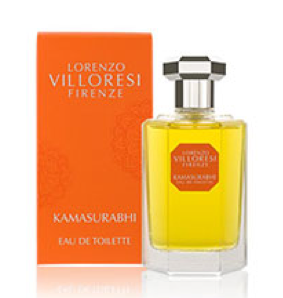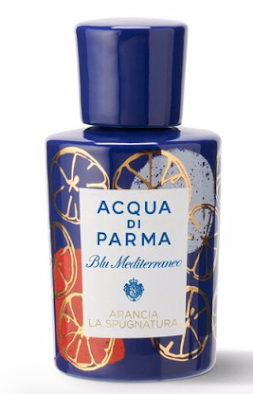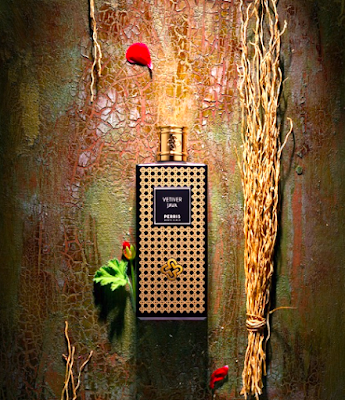Kamasurabhi (Lorenzo Villoresi, 2015)
In
the late '70s and early' 80s my father was still working at the Port
of Genoa and his work often took him on board merchant vessels for
document control and procedures for discharging cargo. If he knew he would get on board a ship coming from
particularly exotic places, he never failed to bring along something
to give the officers as a welcome. Generally it would be something
typically Italian like a packet of pasta or a bottle of wine.
 In
particular, when the vessels came from China he generally was
returning home with little treasures that none of us had ever seen
before: masks made of rice paper so thin that one could see through
it, traumatizing "Hundred Years" eggs (duck eggs subjected
to an oxidation process underground that completely transforms the
color, texture and flavor), but especially jasmine, sandalwood and
orange blossom soaps, and small fans made of
sandalwood that, while cooling you down with air, also intoxicated
you with the beautiful scent of sandalwood.
In
particular, when the vessels came from China he generally was
returning home with little treasures that none of us had ever seen
before: masks made of rice paper so thin that one could see through
it, traumatizing "Hundred Years" eggs (duck eggs subjected
to an oxidation process underground that completely transforms the
color, texture and flavor), but especially jasmine, sandalwood and
orange blossom soaps, and small fans made of
sandalwood that, while cooling you down with air, also intoxicated
you with the beautiful scent of sandalwood.Obviously these last items were my favorites, and some of these are still circulating at my parents'(not the eggs, fortunately). Well, thirty years after, both the fans and the soaps still bear traces of the scent!
 Why
I'm telling you all this? Because the other day I received from
Maestro Lorenzo Villoresi a sample of his new creation, Kamasurabhi,
I sprayed it on... and I jumped back thirty years! I had not smelled
such a clear and powerful sandalwood note since those fans. A woody,
pungent note, yet gentle; mystical yet daily.
Why
I'm telling you all this? Because the other day I received from
Maestro Lorenzo Villoresi a sample of his new creation, Kamasurabhi,
I sprayed it on... and I jumped back thirty years! I had not smelled
such a clear and powerful sandalwood note since those fans. A woody,
pungent note, yet gentle; mystical yet daily.
But
let's get to the scent itself.
The
"scent of pleasure" (this is the translation of the name in
Indian language) is an interesting creation centered on the sacred
sandalwood fragrance, which is coupled to a bouquet of flowers
traditionally considered as sensual (rose, jasmine, tuberose, ylang
ylang, orange blossom and narcissus) plus other typically Indian
flowers, whose fragrances is mostly unknown to me (above all the
Bakul and Kadamba, because I know the Pandanus plant, I still have a
vague memory of the fragrance it emanated).
The result is
multifaceted and unique, gently exotic, evoking an idea of India (of
course, for me, of China) both sensual and spiritual, full of colors
and contrasts and thus really close to reality. Villoresi has granted
Kamasurabhi no sugariness, this is rather an "undomesticated"
scents and does not smell of "East seen by a Westerner";
rather it is a kind of Polaroid snapshot of a real place away from
us. I perceive a truth that somehow touches me deeply, as if
Kamasurabhi was created as a gift of love for India. I can not
explain it better, but it's definitely a scent that speaks, and that
is exactly what a perfume should do.
The
life of the fragrance itself is coherent, about three to four
hours, while the sandalwood drydown remains perceptible for eight
hours and beyond as a transparent veil on the skin.
It might be
created as female scents, but I would see it on a man very well, too.
Visit Villoresi's English website (here) for all infos about it!






Commenti